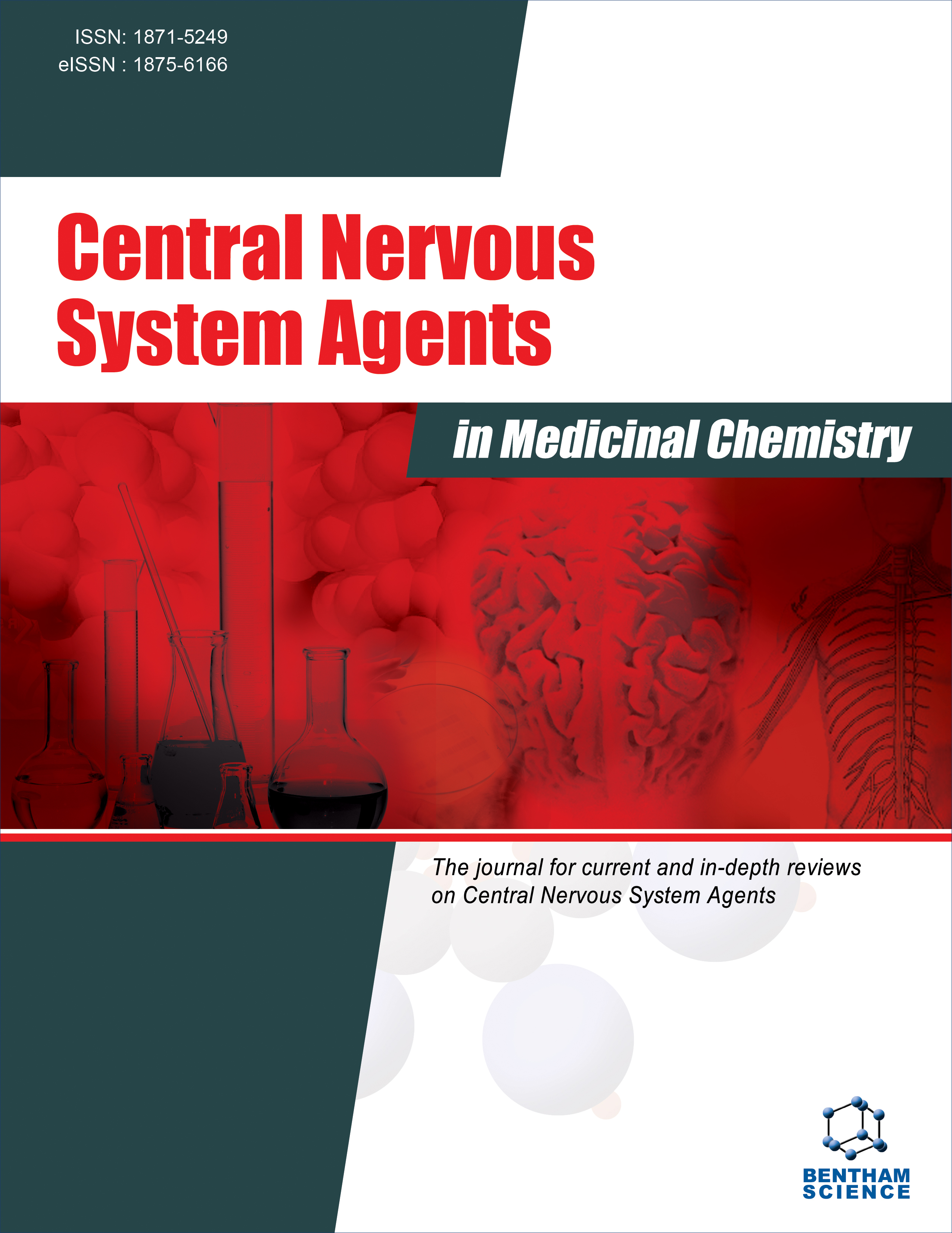- Home
- A-Z Publications
- Central Nervous System Agents in Medicinal Chemistry (Formerly Current Medicinal Chemistry - Central Nervous System Agents)
- Previous Issues
- Volume 8, Issue 2, 2008
Central Nervous System Agents in Medicinal Chemistry (Formerly Current Medicinal Chemistry - Central Nervous System Agents) - Volume 8, Issue 2, 2008
Volume 8, Issue 2, 2008
-
-
The Contribution of Dopamine to the Implementation of Reward Value During the Control of Action
More LessRecent studies show that the behavioral changes associated with reward expectation may be underpinned by two different cognitive mechanisms: perceptual sensitivity on the one hand, and response bias on the other. Perceptual sensitivity refers to the quality of decision-making as a function of the ratio between signal and noise. The prospect of reward may improve the signal-to-noise ratio for stimuli with a high reward value. Read More
-
-
-
Ketamine and Glutamate Receptors: Potential Toxicity of General Anesthetics during Rapid Brain Development
More LessAuthors: Cheng Wang, Xuan Zhang, Xiaoju Zou, Merle G. Paule and William S. Jr.The amino acid L-glutamate is generally recognized as the major excitatory neurotransmitter of the mammalian central nervous system (CNS) and glutamate receptors play a major role in fast excitatory synaptic transmission. Nmethyl- D-aspartate (NMDA)-type glutamate receptors are widely distributed throughout the CNS and operate ligandactivated ion channels. The activation and function of NMDA receptors are modulated Read More
-
-
-
Infantile Epileptic Encephalopathy with Hypsarrhythmia (Infantile Spasms/West Syndrome) and Immunity
More LessAuthors: Terezinha d. Cresci Braga Montelli and M. T.S. PeracoliWest syndrome is a severe epilepsy, occurring in infancy, that comprises epileptic seizures known as spasms, in clusters, and a unique EEG pattern, hypsarrhythmia, with psychomotor regression. Maturation of the brain is a crucial component. The onset is within the first year of life, before 12 months of age. Patients are classified as cryptogenic (10 to 20%), when there are no known or diagnosed previous cerebral insults, and Read More
-
-
-
Novel Pharmacological Targets for Controlling Dendrite Branching and Growth During Neuronal Development
More LessAuthors: Jose R. Fernandez and Bonnie L. FiresteinProcessing of information by the central nervous system (CNS) depends on the dendritic morphology of postsynaptic neurons. The patterning of dendrites is determined by extrinsic and intrinsic factors that promote the activation of cellular signaling pathways. These factors and signaling cascades may lead to the transcriptional activation of regulators of neuronal morphology. Interestingly, when there is an abnormal decr Read More
-
-
-
Boom and Bust for Homocysteine?
More LessJust a few short years ago, elevated homocysteine levels were widely considered to be a risk factor for a plethora of diseases from cardiovascular disorders to neurodegenerative conditions. Because of this there was a boom in research into this amino acid, with over 13 000 scientific papers published on it by January, 2008. It was hoped that simple pharmacological and dietary intervention to lower plasma homocysteine woul Read More
-
-
-
Novel Nucleic Acid-Based Agents: siRNAs and miRNAs
More LessAuthors: Tiago C. Pereira and Iscia Lopes-CendesA novel class of therapeutic agents based on nucleic acids has emerged and shown very promising pre-clinical results, named small interfering RNAs (siRNAs) and microRNAs (miRNAs). siRNAs are small RNA duplexes capable of silencing undesired (i.e., mutant, exogenous or aberrant) gene expression with high specificity through a mechanism known as RNA interference. These agents have called special attention to neurosc Read More
-
-
-
Multitarget Selective Antidepressants Design: Latest Developments, Opportunities and Challenges
More LessAuthors: Nigus Dessalew, Workalemahu Mikre and Ariaya HymeteFor ages, the practice of drug discovery has relied heavily on the one-drug one-target design strategy of medicinal chemistry. However, despite the tremendous advances made in chemical and biological sciences and in the discovery technologies the number of drugs/drug candidates coming out from this one-drug one-target approach is paradoxically dwindling. It is now well recognized that the age old philosophy of medicinal che Read More
-
Volumes & issues
-
Volume 25 (2025)
-
Volume 24 (2024)
-
Volume 23 (2023)
-
Volume 22 (2022)
-
Volume 21 (2021)
-
Volume 20 (2020)
-
Volume 19 (2019)
-
Volume 18 (2018)
-
Volume 17 (2017)
-
Volume 16 (2016)
-
Volume 15 (2015)
-
Volume 14 (2014)
-
Volume 13 (2013)
-
Volume 12 (2012)
-
Volume 11 (2011)
-
Volume 10 (2010)
-
Volume 9 (2009)
-
Volume 8 (2008)
-
Volume 7 (2007)
-
Volume 6 (2006)
Most Read This Month
Article
content/journals/cnsamc
Journal
10
5
false
en


